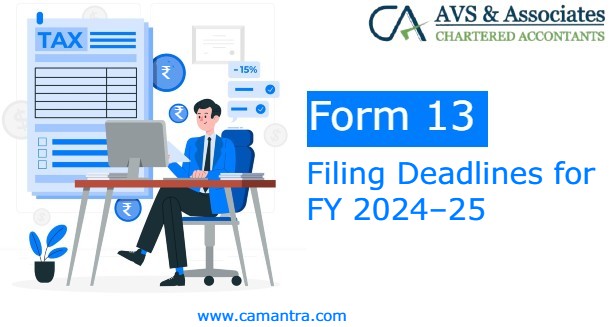Navigating India’s income tax framework involves understanding a range of forms and deadlines. Among them, Form 13 is particularly valuable for taxpayers looking to reduce or eliminate tax deducted at source (TDS) or tax collected at source (TCS). With the conclusion of Financial Year (FY) 2024–25 on March 31, 2025, it’s important to look at how Form 13 fits into your tax planning and what steps should be taken moving forward.
What is Form 13?
Form 13 is a form submitted to the Income Tax Department to apply for a certificate that permits lower or zero deduction of TDS or TCS on certain income. It applies to individuals and businesses expecting that their total tax liability for the year will be less than what would be deducted at regular TDS/TCS rates.
The certificate is granted under Section 197 of the Income Tax Act for TDS and Section 206C(9) for TCS. Once approved, the certificate allows income earners to receive payments with reduced or zero tax deduction, improving cash flow and preventing unnecessary refunds later.
When to File Form 13 for FY 2024–25?
Unlike income tax returns, there is no universal deadline for filing Form 13. Instead, the timeline is determined by when you expect to receive the income for which you are seeking reduced or nil TDS/TCS.
For FY 2024–25, Form 13 should have ideally been filed and approved before the payment or credit of income to you. For instance, if you received professional fees in January 2025 and wanted a lower TDS rate, the application needed to be submitted and approved well before that month.
Although there’s no official cut-off, the TRACES portal (used for online Form 13 filing) reportedly accepted applications for FY 2024–25 up to mid-March 2025. If you missed that window, any excess TDS/TCS will now need to be claimed as a refund when filing your income tax return for Assessment Year 2025–26.
Looking Ahead: Form 13 for FY 2025–26
As FY 2024–25 has ended, taxpayers should now focus on FY 2025–26. If you anticipate receiving income during this financial year and expect your tax liability to be lower than standard TDS/TCS rates, you should file Form 13 early—ideally at the start of the year.
Filing early ensures that the certificate is issued in time and prevents over-deduction of taxes. This is particularly important for regular income streams like consultancy fees, rental income, or interest payments.
How to File Form 13
Form 13 is required to be submitted online via the TRACES portal. The process involves:
- Registering as a taxpayer on the TRACES platform
- Filling out the online Form 13 with income estimates and tax projections
- Uploading mandatory documents such as ITR copies, financial statements, or projected income reports.
- Addressing and responding queries raised by the Assessing Officer
Upon review and approval, a certificate is issued that can be submitted to the deductor.
Key Takeaway
While there’s no fixed statutory deadline for Form 13, timing is everything. To benefit from lower or nil TDS/TCS, you must apply before income is received. As the new financial year 2025–26 begins, it’s wise to apply for Form 13 early to prevent excess TDS/TCS deductions and avoid refund hassles later.

